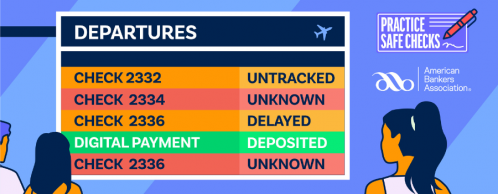
Is this Text Real or a Trap?
You receive texts from friends and family daily, but what do you do when you receive a text and question the source? The answer matters because your response to a questionable text might keep you safe from a scammer - or lead you into a trap.
Text Message Scams on the Rise
New data from the Federal Trade Commission (FTC) shows that in 2024, "consumers reported losing $470 million to scams that started with text messages. This amount is five times higher than what was reported in 2020, even though the number of reports declined."
How Text Scams Work
Below is a simplistic example of how a spoofed message can be sent to you.
- Step One. Threat actors obtain your phone number on the Dark Web or generate your number with an auto-dialer tool.
- Step Two. The scammer creates a message. Many scam texts sound urgent to get victims to react without thinking - "invoice overdue" or "your account has been breached" are common ruses.
- Step Three. The scammer sends the text and hopes you bite.
Prevention Tips
- Don't reply to unexpected text messages. The text may push you to react quickly, but it's best to stop and think it through.
- Never click links in unexpected messages. You might download malicious software (malware) that will compromise your device, and scammers often create real-looking websites to draw you deeper into the trap.
- Don't assume a text from a known company or organization is legit. Double-check by contacting the company. Don't use information from the text - get a phone number or email address from the company's website.
Filtering Unwanted Texts
There are many ways to filter unwanted text messages or stop them before they reach you.
- On your phone: Your phone may have an option to filter and block spam or messages from unknown senders. Here's how to filter and block messages on an iPhone and how to block a phone number on an Android phone.
- Through your wireless provider: Your wireless provider might have a tool or service that lets you block calls and text messages. Check out ctia.org, a website from the wireless industry, to learn about options from different providers.
- With a call-blocking app: Go to ctia.org for a list of call-blocking apps for Android, BlackBerry, Apple, and Windows phones, or search for an app online. Check out the features, user ratings, and expert reviews.
Take Action - Report Texts
- Forward spam messages to 7726 (SPAM). This helps your wireless provider spot and block similar messages.
- Report potential scams on either the Apple iMessages app or Google Messages app for Android users.
- Report potential scams to the FTC at ReportFraud.ftc.gov
If you've lost money to a scam, reach out to the company that transferred the money right away to see if there's a way to get your money back. Then report the scammer at ReportFraud.ftc.gov.
If you receive any suspicious texts that seem to be coming from SFB, please call SFB's Customer Service at 888.254.0615 or visit any of SFB's local branches with any questions or concerns.



